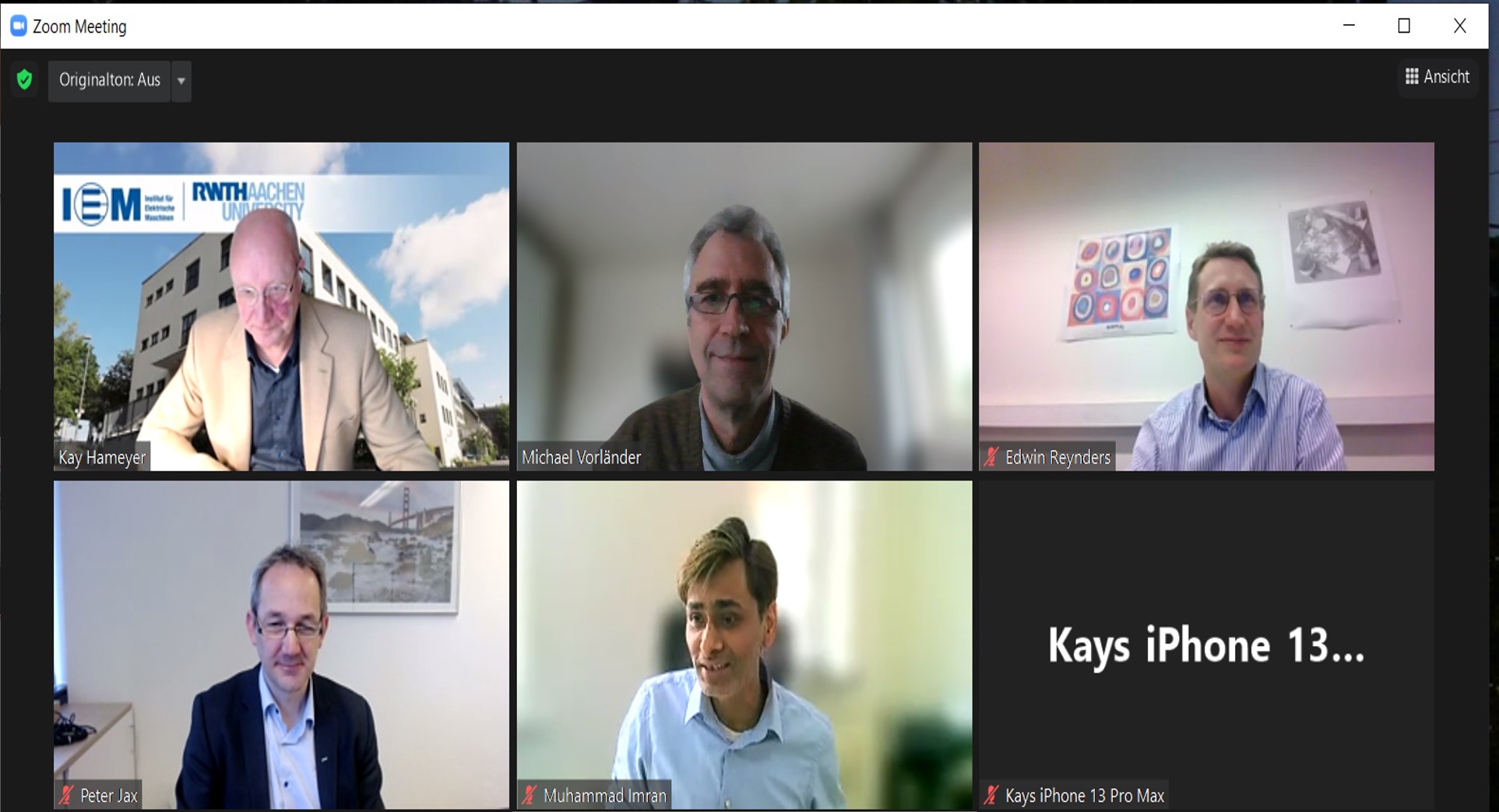Am 4. Februar 2022 hat Herr Muhammad Imran seine mündliche Promotionsprüfung erfolgreich abgeschlossen.
Herr Muhammad Imran promovierte über das Thema:
„Virtual Building Acoustics – Auralization with contextual and Interactive Features“
Abstract:
Building acoustics auralization is used to assess the perceptual aspects of sound transmission in built environments to provide the guidelines for architectural constructions and to evaluate the noise effects on humans. These noise effects have a negative influence on daily-life activities and create disturbances in physical and metal work. These disturbances are present within the dwellings and/or might be from outdoor moving transient sound sources. Methods are available for auralization of sound insulation between connected rooms in compliance with the standardized data formats of sound insulation metrics and building structural geometries. However, there still exist certain challenges to be addressed to construct the transfer functions between noise sources and receiver room for indoor situations as well as for the outdoor moving sound sources and to make these sources audible through audio-visual virtual reality systems in real time and interactively. These challenges are due to certain simplifications which are implicit in the formulation on which the sound insulation prediction models are based, such as, diffuse field assumptions, neglecting source characteristics, and source and receiver room acoustics.
This thesis focuses on addressing the present challenges in the traditional sound insulation rendering techniques and establishing an interface between psychoacoustic research and building acoustics in dwellings (especially airborne sound insulation) integrated with audio-visual virtual reality environments. From the technical perspective, improvements are made in sound insulation prediction methods, and corresponding filter construction and rendering techniques for auralization. In the first place, the building elements are considered as multitude of secondary sources rather than taking them as point source radiators and the bending wave patterns are addressed in order to be able to properly construct the transfer functions from source to the receiver room. Secondly, the room acoustical simulations are carried out for both source and receiving rooms to generate transfer functions from source to the source room walls and from radiating receiving room walls to the listener, so that the geometries and absorption might be fit to the properties desired by the user for the spatial impression of the listening rooms. In addition, the transfer functions from radiating walls of the receiving room to listener are designed in such a way that not only indoor sources are handled nevertheless the outdoor moving sources are also addressed.
Some important conditions are associated with virtual building acoustics auralization research platform for advanced studies of noise effects in dwellings which are addressed. The audio files, generally, used in listening tests are arbitrarily manipulated by audio samples without the background of a physical model of the built environments. They must comply with the standardized data formats of sound reduction indices (level differences) and/or sound transmission coefficients. Other data related to building structure such as geometry shall be strictly connected to the architectural design, the building materials and constructions. Otherwise the conclusions of the psychoacoustic experiments have no direct correlation with the architectural design, especially when presented through virtual environments. To achieve this, the auralization framework is extended toward real-time interactive audio-visual technology, i.e. VR technology, in order to be able to introduce more realism and, hence, contextual features into psychoacoustic experiments. The building acoustics framework is validated by taking indoor and outdoor example case studies. Listening experiments close to real-life situations are carried out by using this framework to show that this framework can be used as an alternate to design new test paradigms which help to better analyse and interpret the noise impact in building situations depending on the actual activity such as working, learning, and rest.
Das IHTA gratuliert sehr herzlich!!

Doctoral exam Muhammad Imran, Examination committee: Prof. Dr. Kay Hameyer, Prof. Dr. Michael Vorländer, Prof. Dr. Edwin Reynders, Prof. Dr. Peter Jax

